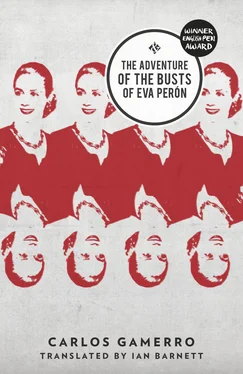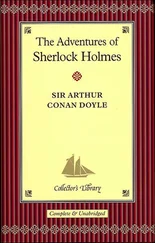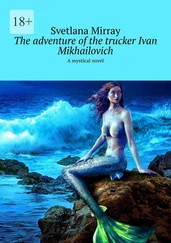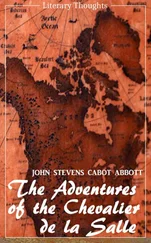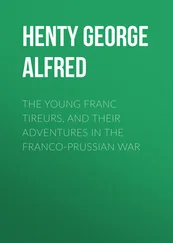Carlos Gamerro - The Adventure of the Busts of Eva Perón
Здесь есть возможность читать онлайн «Carlos Gamerro - The Adventure of the Busts of Eva Perón» весь текст электронной книги совершенно бесплатно (целиком полную версию без сокращений). В некоторых случаях можно слушать аудио, скачать через торрент в формате fb2 и присутствует краткое содержание. Год выпуска: 2015, Издательство: And Other Stories, Жанр: Современная проза, на английском языке. Описание произведения, (предисловие) а так же отзывы посетителей доступны на портале библиотеки ЛибКат.
- Название:The Adventure of the Busts of Eva Perón
- Автор:
- Издательство:And Other Stories
- Жанр:
- Год:2015
- ISBN:нет данных
- Рейтинг книги:3 / 5. Голосов: 1
-
Избранное:Добавить в избранное
- Отзывы:
-
Ваша оценка:
- 60
- 1
- 2
- 3
- 4
- 5
The Adventure of the Busts of Eva Perón: краткое содержание, описание и аннотация
Предлагаем к чтению аннотацию, описание, краткое содержание или предисловие (зависит от того, что написал сам автор книги «The Adventure of the Busts of Eva Perón»). Если вы не нашли необходимую информацию о книге — напишите в комментариях, мы постараемся отыскать её.
Carlos Gamerro's novel is a caustic and original take on Argentina's history.
The Adventure of the Busts of Eva Perón — читать онлайн бесплатно полную книгу (весь текст) целиком
Ниже представлен текст книги, разбитый по страницам. Система сохранения места последней прочитанной страницы, позволяет с удобством читать онлайн бесплатно книгу «The Adventure of the Busts of Eva Perón», без необходимости каждый раз заново искать на чём Вы остановились. Поставьте закладку, и сможете в любой момент перейти на страницу, на которой закончили чтение.
Интервал:
Закладка:
3. The Bosses’ Bacchanal
‘Eighty-nine busts of Eva Perón, standard model, plain plaster of Paris, at 2,000 pesos a unit, that’s a subtotal of 178,000 pesos, plus three in white cement for outdoors, at 2,500 pesos a unit, that’s a subtotal of 7,500 pesos, that makes 185,000 in total, a 10 per cent discount for… payment upfront, is it?’
Marroné nodded, avidly gulping in the refrigerated air: twenty-eight degrees in the shade at eight o’clock in the morning, the radio presenter had announced, not without a hint of malice, as Marroné drove down the freeway to the Sansimón Plasterworks, whose owner now took the cheque from his hands and, snapping it in the air a couple of times to test its elasticity, insisted on treating him yet again to the celebrated aerial tour of his impressive plasterworks, a proposal that Marroné, ever mindful of the demands of public relations, seconded with an enthusiasm as convincing as it was fake.
His guide had given his factory’s shop floor the layout and even the dimensions of a cathedral (‘190 metres long, three more than St Peter’s,’ he immodestly specified). It was organised over two levels: the Terrestrial, where the machines and their operators were located, and the Celestial, suspended in its entirety above the Terrestrial and comprising two large office wings situated over the arms (‘Transepts,’ specified Sansimón), the management’s offices over the apse, and the overhead rails along which the foremen travelled the length and breadth of the central nave in their yellow chair-lifts.
He’d picked them up at junk prices in the tourist end of the Córdoba sierra, where the Sansimóns owned numerous quarries, and then had them dismantled, transported, reassembled and hung from the crossbeams and struts of the vaulted roof. They were boarded on the Celestial level, and each could comfortably accommodate two people, though the ones Marroné could see in motion were each occupied by just one black-helmeted foreman, whose job it was to keep an eye on the workers from on high and bark detailed instructions at them through a megaphone.
Sansimón led him to the first chair-lift in the line. After taking their seats, donning their executives’ white helmets and lowering the safety bar, they set out on their trapeze artist’s tour through the heights of the factory. Each chair was equipped with a personal console that let you move horizontally in all four directions and even descend to the shop floor via a simple pulley system, an option many of the foremen made use of to scrutinise the workers’ labours at closer quarters. Combining the roles of driver and guide, Sansimón manipulated the controls at the same time as he gave a running commentary itemising the innovations and improvements introduced since his return from the United States.
‘We brought in colour coding, as you might have noticed. Here in the Yellow Sector,’ he said, pointing to the chrome yellow of the machines and the lemon of the workers’ helmets, each with its black ID number clearly legible on the crown, ‘we manufacture ceiling roses, mouldings, cornices, rosettes, friezes, balusters, corbels, columns and amphorae; in the Brown Sector stucco, gesso, plaster casts, floor treatments and insulation — oh, and chalk of all colours too, essential for educational purposes,’ he rounded off, and Marroné thought he could see a delicate rainbow of fine dust at the heart of the uniform white cloud rising from all the general toiling beneath. ‘In the Green Sector we make stuff for the medical industry: orthopaedic plaster, plaster bandages, plaster for death masks when all else fails,’ he said, allowing himself the same joke he had cracked on all the other tours, and which Marroné laughed at with the same laugh. ‘And now…’ he made a pause that had something majestic about it, as the chair switched rails and set off on its procession down the imposing central nave, ‘for the Blue Sector, where we make partition walls, panels and plasterboards; maybe not the flashiest side of our extensive product range, but most definitely the backbone. But all this is just the beginning. Over there,’ he said, pointing in the direction of the atrium, ‘there’s a revolution afoot in the construction industry, so watch this space: you can wave goodbye to bricks, forget concrete. The future is plaster! Just one hour after setting, Sansimón Super X is as hard and durable as Portland cement. You can combine it with fibreglass for high impact, with polystyrene for flexibility and — with sand and fuller’s earth — it’s both fire-proof and sound-proof. Gypsum is the prima materia the Ancients were searching for, the protean matter par excellence.’ Sansimón waxed lyrical as he worked the chair’s controls with one hand and Marroné’s arm with the other, directing his attention here and there to the points he considered of most interest. And he had good reason to feel proud. The clouds of chalk dust rising like incense smoke, pierced by the shafts of light that streamed in through the high windows; the slow, elegant coordination of man and machine, moving in time through the stages of the liturgy; the exalted music composed by countless organs of steel, with their poundings and hummings, squelchings and whirrings, imparted its fullest meaning to what had seemed at first a mere architectural whim: the Sansimón Plasterworks was a true cathedral to human labour. Taken to these extremes, the efficiency of productive labour took on an aesthetic and — why not? — a spiritual dimension, and Marroné felt a tingling of pride well up through his core to his crimsoned cheeks: he too was part of all this, he was doing his bit, he was one of the numberless yet indispensable pillars of the faith. He was nothing less than an executive-errant.
A conspiratorial nudge from Sansimón drew his attention to a scene playing out a few metres behind them. From up above, in his slowly swinging chair, a foreman was lambasting a blue-helmeted operator through a megaphone.
‘Blue Twenty-Seven, that plaque’s cracked coz you was careless. Docked from your wages!’ Blue Twenty-Seven looked up and said something that was drowned out by the altitude and noise from the machines. The foreman cupped his hand to his ear like a deaf old man and roared back through the megaphone.
‘Can’t hear you, Blue Twenty-Seven. You’ll have to speak up,’ he boomed, and winked at his boss, who shook his head as if to say, ‘They’re something else these boys of mine…’
Once the tour was over, Sansimón pulled the lever on the console and the chair began to descend vertically until it stopped half a metre from the shop floor. Taking his first steps on terra firma with legs of jelly — he wasn’t what you’d call cut out for heights — Marroné followed the sprightly figure of Sansimón towards the workshop, plainly a far older structure housed in the armpit of the left transept. Within, a few sculptors and craftsmen in red helmets were working on long wooden tables, sculpting busts and figures that demanded a more craftsmanly approach: lovingly fashioning the latex and clay of the moulds, stirring the thin white paste in wide, shallow pans, applying the fresh plaster to make copies that, once cast, they smoothed and polished by hand. On either side, on old wooden shelves reaching up to the roof, were accumulated the spectral testimonies to five millennia of civilisation, perpetuated in this infinitely protean white stuff. As he walked, Marroné saw Chinese mandarins with conical hats, broad sleeves and long Fu Manchu whiskers; Buddhas in all postures and sizes, the smiles of the smallest — more cunning than enlightened — echoed by the broader-than-their-faces smiles of a choir of Carlos Gardels and those of a congregation of gluttonous friars rubbing their pot bellies; he took in the masks of tragedy and comedy, phalanxes of Michelangelo Davids flanked by Oscar statuettes, sphinxes, Tutankhamuns and Nefertitis, Egyptian cats, tablets and sarcophagi covered with hieroglyphs; shepherds and shepherdesses with crooks, panpipes and little lambs; he gazed upon repeated Nativity scenes (Herod’s nightmare multiplied), a whole camp of nudes (kissing couples, sorceresses, girls with pitchers), Saint Georges and the Dragons, Aztec calendars, Myron Discoboli and lucky elephants; he came across a host of Venuses de Milo by a flock of Victories of Samothrace (the Venuses huddled together like skittles in a bowling alley, the Victories like doves taking wing); he spotted a whole row of Laurel and Hardy medallions jumbled between a pair of Einstein bookends; a Canova Pauline Bonaparte surrounded by coiled sausage-dog ashtrays; Don Quixotes and Sancho Panzas in a variety of poses: standing, on horse- and donkey-back, and even sitting on thrones; bas-reliefs of the Last Supper and an infinity of medals of Martín Fierro, with Sergeant Cruz, guitar, maté and horse; he saw Rodin Thinkers and Michelangelo Pietàs, wagonloads of Statues of Liberty, citadels of Eiffel Towers, tunnels of Arcs de Triomphes and bristling forests of Big Bens and Obelisks; massed ranks of Michelangelo Moseses directing their severe gazes at a chorus line of Marilyns with uplifted skirts; he spotted busts of Mozart, Beethoven, Schubert, Brahms and, with growing jubilation, those of the great figures of universal history: Socrates, Pericles, Alexander the Great, Julius Caesar, Napoleon, Lincoln, Lenin, Churchill, Franco, Hitler and Mussolini (‘We sell those three under the counter, but they go like hot cakes,’ Sansimón clarified)… Until he reached the pantheon of national heroes: enormous busts, life-size or larger, of San Martín the Liberator (young and sideburned, old and moustachioed), Belgrano, Sarmiento, Irigoyen and Perón (in two models: the general with furrowed brow, and in shirtsleeves wearing an avuncular smile), and finally — and at that moment Marroné really did feel like a knight-errant standing before the Holy Grail — four busts with the virile, classical, Spartan lines of the serene and peerless Eva Perón.
Читать дальшеИнтервал:
Закладка:
Похожие книги на «The Adventure of the Busts of Eva Perón»
Представляем Вашему вниманию похожие книги на «The Adventure of the Busts of Eva Perón» списком для выбора. Мы отобрали схожую по названию и смыслу литературу в надежде предоставить читателям больше вариантов отыскать новые, интересные, ещё непрочитанные произведения.
Обсуждение, отзывы о книге «The Adventure of the Busts of Eva Perón» и просто собственные мнения читателей. Оставьте ваши комментарии, напишите, что Вы думаете о произведении, его смысле или главных героях. Укажите что конкретно понравилось, а что нет, и почему Вы так считаете.
